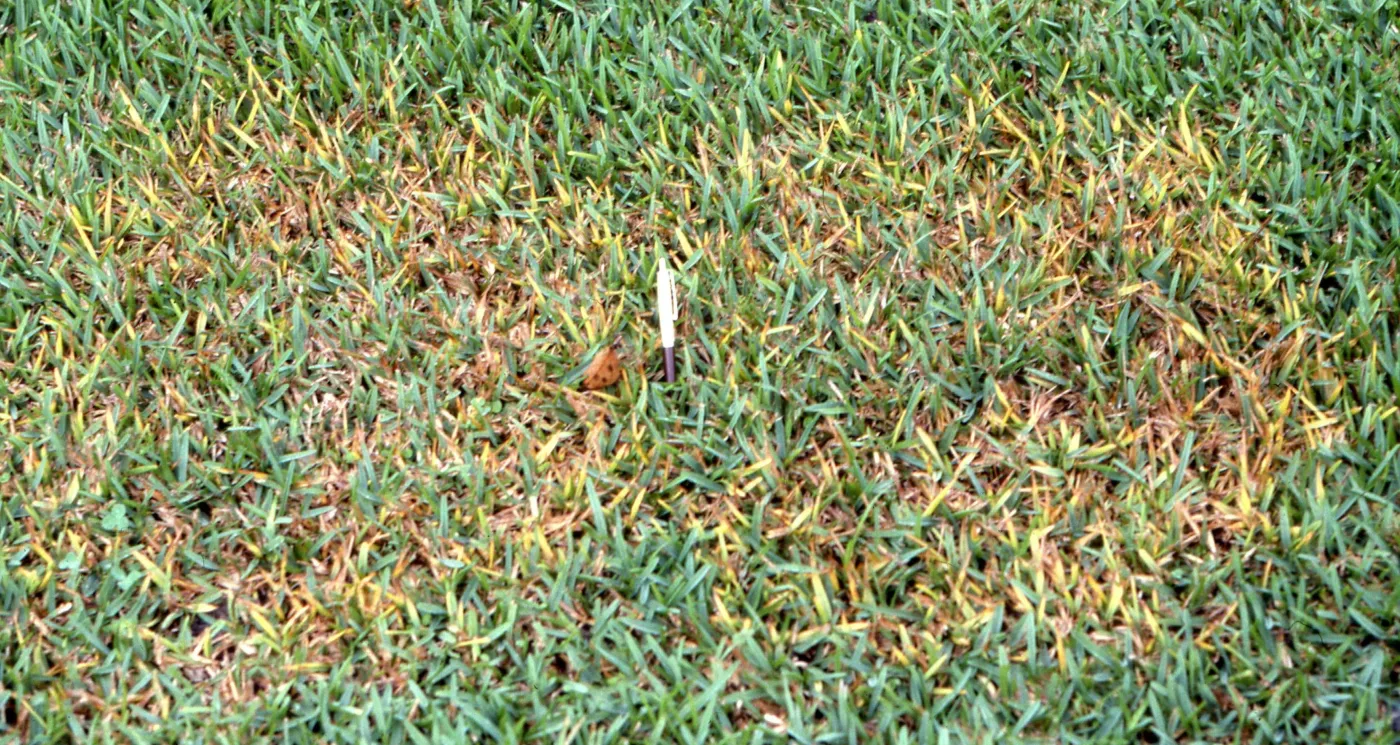Although the word 'pest' is typically used to describe an insect such as chinch bugs or webworms, the term is actually used to describe anything that is unwanted. (Perhaps you remember what you called your little sibling in high school?) In this case, a landscape can have many pests - such as insects, weeds, disease, improper drainage, etc.
When and where is this pest the most prevalent?
This lawn disease can affect all turf - but primarily is found in St. Augustine and Zoysia lawns. In our North Central Florida market, it is especially rampant in early spring and late fall.
How can I identify this as the problem in my lawn or landscape?
It typically starts off as small patches that turn yellow and then brown, in a noticably round pattern (see 2 round spots in photo above). Patches can expand to several feet in diameter as the disease grows, and it is not uncommon to see green healthy turf in the center of the circle.
How does it occur and how can I prevent it?
Just like any fungus, this one starts out with moisture. Whether it's excessive rainfall, irrigation, or extended periods of high humidity - it starts by the yard staying continuously wet for 48 hours or more. This is the biggest reason why it is so prevalent in spring and summer, as the high temperatures that typically evaporate the moisture aren't present in early spring and late fall.
What can I do to resolve the issue?
- The first thing you can do is cut back on your irrigation settings to take excess moisture out of the equation.
- A fungicide application is vitally important to resolve the issue in a timely manner.
- Avoid mowing the affected area of your lawn, as mowers can spread the disease into other parts of your lawn.
- Do not fertilize until the disease is completely cured.
As always, if this pest is an issue in your Alachua, Newberry, or Gainesville lawn - please call our office for a lawn application to resolve it. Email our office at info@themasterslawncare.com or call (352) 378-LAWN.


